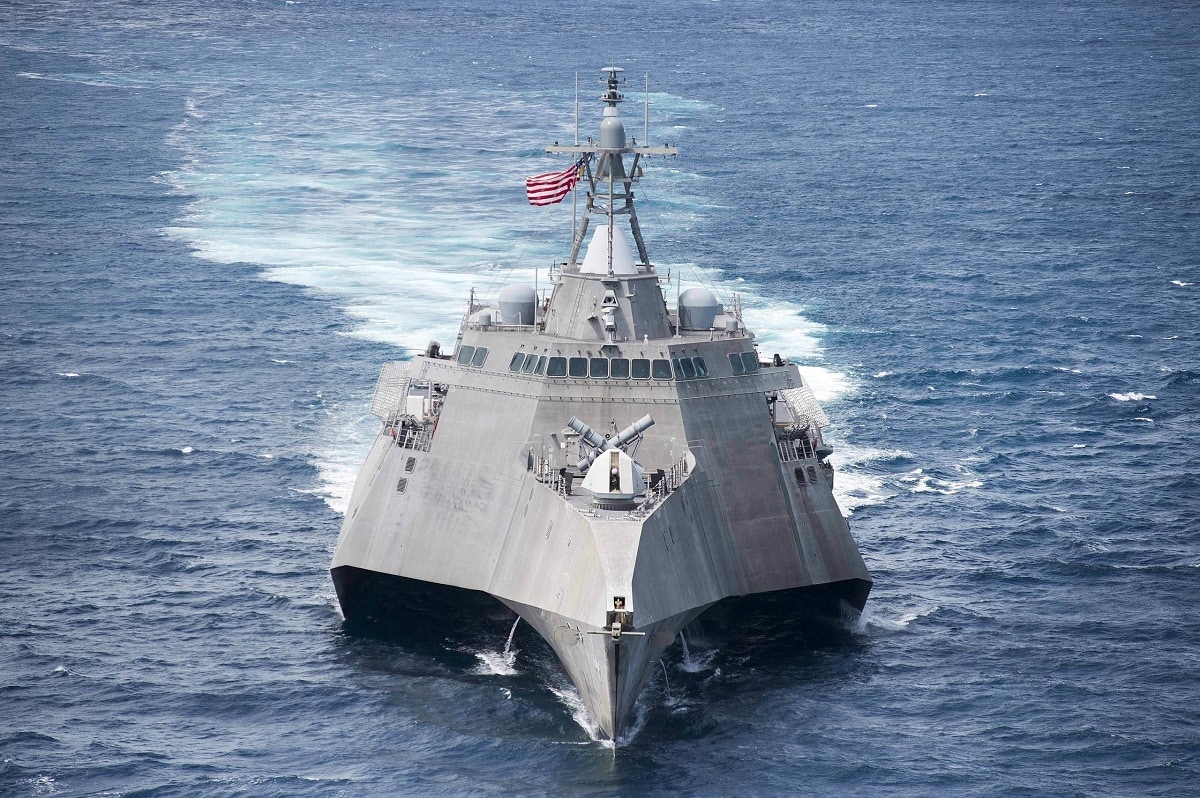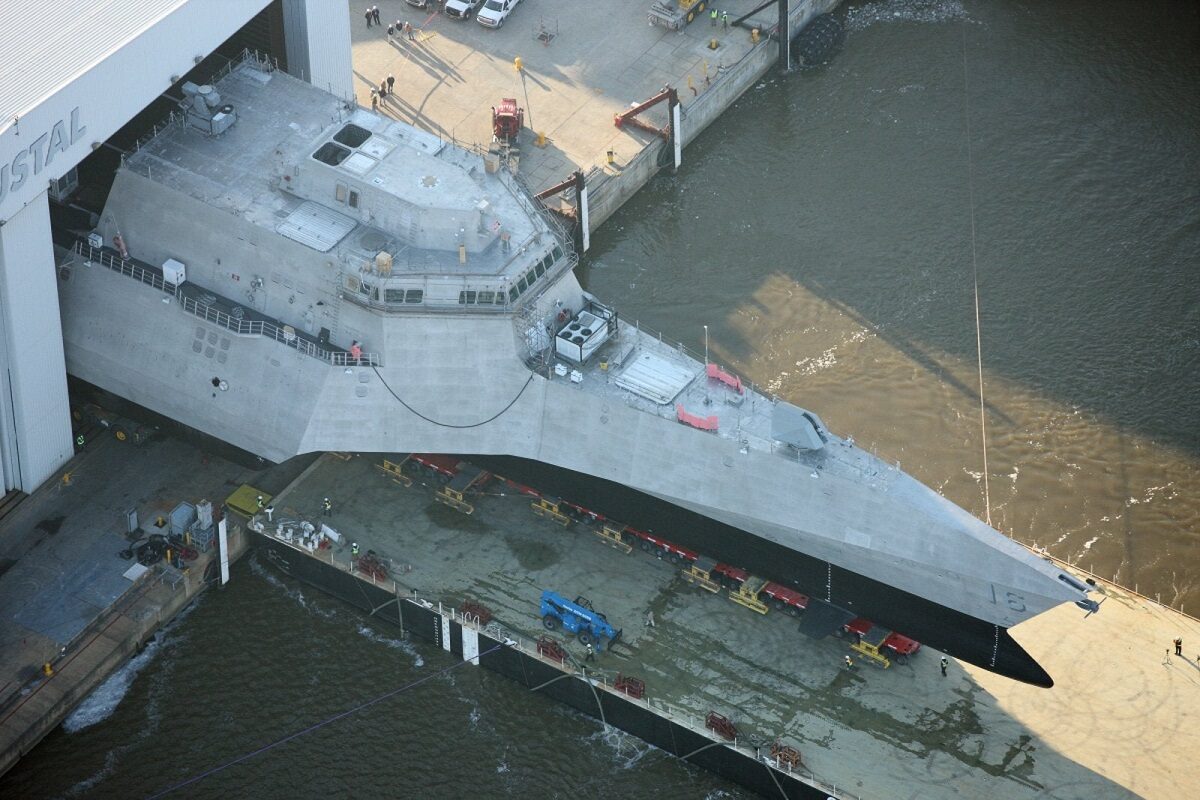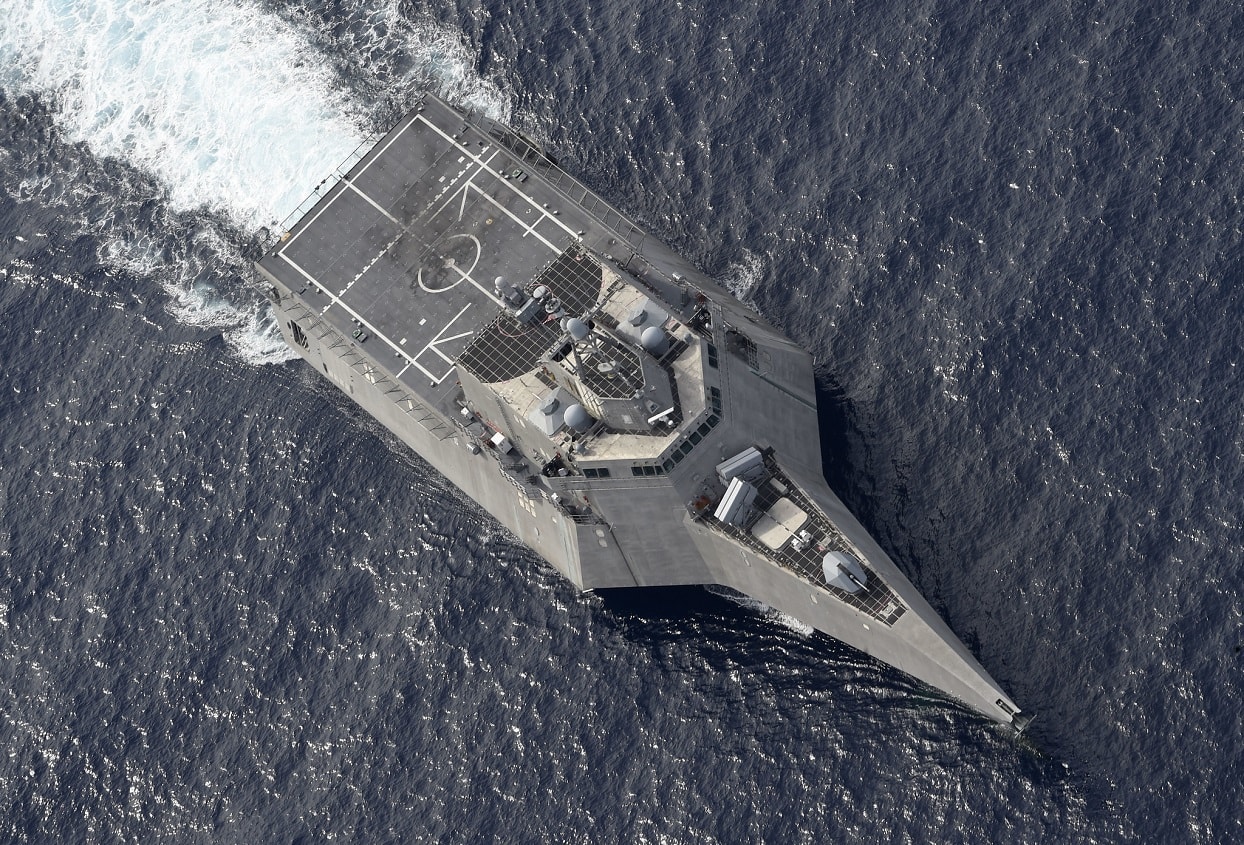The U.S. Navy’s Littoral Combat Ship (LCS) was supposed to transform naval warfare. 15 years ago, strategists were itching to make changes after threat assessments identified areas that the U.S. Navy needed to address, such as terrorism, piracy, and maritime transnational crime. The thinking went that the navy would be better served with a small, fast, and agile ship that could operate near shore. But the LCS has not lived up to its original billing. There have been numerous mechanical problems and failures – leading to two ships being decommissioned altogether.
The LCS still has a lot of potential when lining up against China. Earlier 1945 analysis has illustrated Chinese fears of the LCS – that its speed and use of anti-ship missiles could be a difference-maker in East Asia. The ship could also conduct minesweeping and anti-submarine warfare. The LCS looks nice in photos and the specs are great on paper, but the reality has been anything but smooth sailing.
Why the U.S. Navy’s Littoral Combat Ship Failed
It has been a rough 13 years since the navy commissioned the U.S.S. Independence, the first LCS. After years of underwhelming performance and corrosion issues in 2011 that were making the ship’s hull disintegrate, the navy decided to moth-ball the Independence in July. It had endured numerous cost overruns and delays. Another LCS, the Freedom, was decommissioned at the end of September. As more Littoral Combat Ships came online, more problems cropped up. In 2015, one had to be towed back to port after mechanical issues. In the same year, yet another had to be sent back to port. There were engine and propulsion concerns that lead to mounting frustration. The navy had enough by January 2021 and stopped all new deliveries.
More Designs More Problems
To make the acquisition program more confusing, the LCS has two different designs from two different defense contractors. The Freedom-class has a monohull design and the Independence-class has an aluminum trimaran layout. They cost about $360 million each. Both classes of ships had maintenance problems. Critics doubted their survivability in a shooting war. The engines did not work right.
One of the unique selling points of the ships was that different missions, such as anti-piracy and counter-terror, could be systematically swapped out. But that feature was ended after a myriad of difficulties. Then the navy tried adding the Naval Strike Missile to some LCS models. That looked to have potential, but the main issue was still keeping the LCS at sea rather than in port for repairs.
Oh For What Could Have Been
There was a time during the first decade of the global war on terror that the LCS made sense. Naval ships needed a fast craft that could deal with offshore problems. Pirates were ravaging shipping off the coast of the Horn of Africa. Cartels were starting to ship more narcotics with crude submarines. So, the LCS seemed to have all the answers.

The littoral combat ship USS Coronado (LCS 4) steams ahead during a division tactics exercise in support of Cooperation Afloat Readiness and Training (CARAT) Thailand.

Image: Creative Commons.
The biggest problem was the two designs. The ships had different problems depending on who manufactured them. Maintenance costs went up. The navy figured out that missile frigates could do the same missions. The war on terror ended with the fall of Afghanistan. The navy and some Members of Congress simply think the LCS was a mistake. What if it broke down near one of the contested islands in the South China Sea? What if it shot all eight of its strike missiles and then had to defend itself from a Chinese anti-ship missile? These are questions that have to be answered or more Littoral Combat Ships will be de-commissioned.
1945’s new Defense and National Security Editor, Brent M. Eastwood, PhD, is the author of Humans, Machines, and Data: Future Trends in Warfare. He is an Emerging Threats expert and former U.S. Army Infantry officer.

